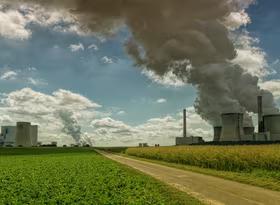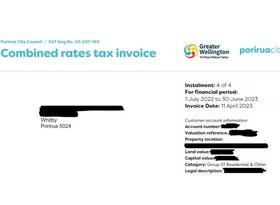
Why are diesel prices rising so fast?
A constrained global supply of diesel has led to a substantial increase in prices over the last few months, both for importers, and at the pump. Higher diesel costs threaten to intensify inflationary pressures, with geopolitical concerns adding further upside risk. In this article, we outline the issues facing the current diesel market, and the outlook over the remainder of 2023 and into 2024.
Main port price up 27% from May
The main port price (the average of retail prices across Auckland, Hamilton, Wellington, and Christchurch) for diesel hit $2.49/L in the last week of September 2023, a 27% increase from the May average of $1.96/L. Apart from the massive price increase in mid-2022, due to the Russian invasion of Ukraine, diesel prices are now at their highest level on record. This increase is largely a supply-side issue, with the world currently producing less diesel than it demands.
At a deeper level, lower oil supply has coupled with stronger than expected demand, and a reduction in inventories, to ramp up pricing pressures.
Russia and Saudi Arabia tighten the tap
OPEC (the Organisation of the Petroleum Exporting Countries) announced a surprise cut to crude oil production in April, which came on top previous cuts from the group in November last year (which we analysed in June). Analysts had generally expected the previous cuts to last only until October 2023. Alongside these restrictions, both Russia and Saudi Arabia have agreed to extend additional voluntary cuts until the end of the year.
The additional cuts from Russia and Saudi Arabia present a unique challenge to the diesel market because of the type of oil these countries produce. Both Russian and Saudi oil is heavier and more sour (having a higher sulphur content) than other crudes, and is therefore preferred for refining diesel than lighter crude oils produced by the United States and elsewhere. The cuts from Saudi Arabia have squeezed diesel production from refineries that had turned to them as a replacement for Russian heavy crude, following the invasion of Ukraine.
Although China shapes up as a possible relief valve, the Chinese government has decided to keep oil product exports capped for the rest of the year, and instead focus on balancing domestic supply and demand.
Since May, petrol import prices have risen 26%, fairly in line with the 24% increase in crude oil prices. However, diesel import prices have increased 43%, highlighting the disproportionate impact of lower heavy crude supply.
Inventories depleted
With OPEC production easing and seasonal demand trending up, fuel inventories have been run down, despite slowing global economic activity. In September, Reuters reported that US distillate inventories (including diesel, petrol, and heating oil) were 16% below the ten-year average and European inventories were 8% below the ten-year average. Additionally, the gap between the long-term average and actual stockpiles had widened in both areas since April.
Low inventory levels not only reduce the level of fuel available, pushing up prices, but also leave the market more vulnerable to demand or supply shocks. For example, oil refinery disruptions in the United States earlier this year have had a larger impact on prices than they would otherwise.
Jet fuel competes for production capacity
The third key component of supply pressures is competition with jet fuel. Jet fuel and diesel are chemically very similar, and both use heavy crude. In this sense, they compete fairly directly for refinery capacity. Now that both the supply of heavy crude, and overall refinery capacity, are limited, movements in the jet fuel market have a more noticeable impact on diesel prices.
Jet fuel demand has grown considerably over 2023 on the back of recovering international air travel, particularly in the Asia Pacific region. Growth in diesel consumption has been less strong, growing by around 100,000 barrels a day over 2023, compared with more than 1 million barrels a day for jet fuel and kerosene.
The relatively slower recovery of diesel consumption has put pressure on refineries distilling heavy crude to produce products like jet fuel instead, further dampening diesel production.
Demand adds fuel to fire
Although demand for diesel has rebounded less rapidly than for jet fuel, the global economy’s softer landing compared to previous expectations means that diesel demand from manufacturing and freight has been stronger than anticipated.
With inventories depleted and little spare refining capacity, the surprising resilience of industrial activity puts the United States at greater risk of a diesel shortage, encouraging portfolio investors to increase their diesel positions. Reuters reported in August that fund managers have increased their position on middle distillates (primarily diesel and jet fuel) by 126 million barrels between May and August.
The spike in diesel prices is primarily due to supply constraints, but stronger-than-anticipated industry activity and fund positioning has exacerbated the imbalance between supply and demand.
Diesel importer premium hits 22c/L over petrol
The particular challenges in the diesel market, on top of overall reduced crude oil production, has caused the import cost disparity between diesel and regular petrol to climb to 22c/L in September.
For comparison, the diesel import cost premium over petrol was just 1 cent per litre on average over the five years to December 2019.
Middle East conflict complicates oil outlook
Recent conflict in the Middle East, with Hamas’s incursions into Israel and retaliation by Israel into Gaza, threatens to increase uncertainty and instability among oil-producing nations. Although Israel isn’t a key oil player, the risk of conflict and tensions spilling over is high. Military posturing could draw in Iran and the United States, and prolonged conflict could also limit moves for Saudi Arabia to recognise Israel and normalise relations.
After a strong rally in oil prices through September, oil prices had been falling in recent times. Current Middle Eastern conflict has sent prices higher again, and risks keeping oil prices at a more elevated level.
Mixed risks to diesel prices over next few months
A further easing in global economic growth, and growing supply of crude oil from non-OPEC producers is expected to limit further rapid price increases. However, oil prices are expected to continue rising over the remainder of the year, as OPEC production remains restrained, Middle Eastern conflict maintains pressure on oil markets, and inventories continue to decline.
The spike in diesel prices will have ripple effects throughout the global – and local – economy, with businesses facing higher transport and machinery costs expected to pass some of these costs onto consumers. Importantly, these increased costs will risk inflation remaining higher for longer. Our expectations for transport costs, and the associated effect on domestic inflation, will be detailed in our upcoming October macroeconomic forecasts, out next week.

















